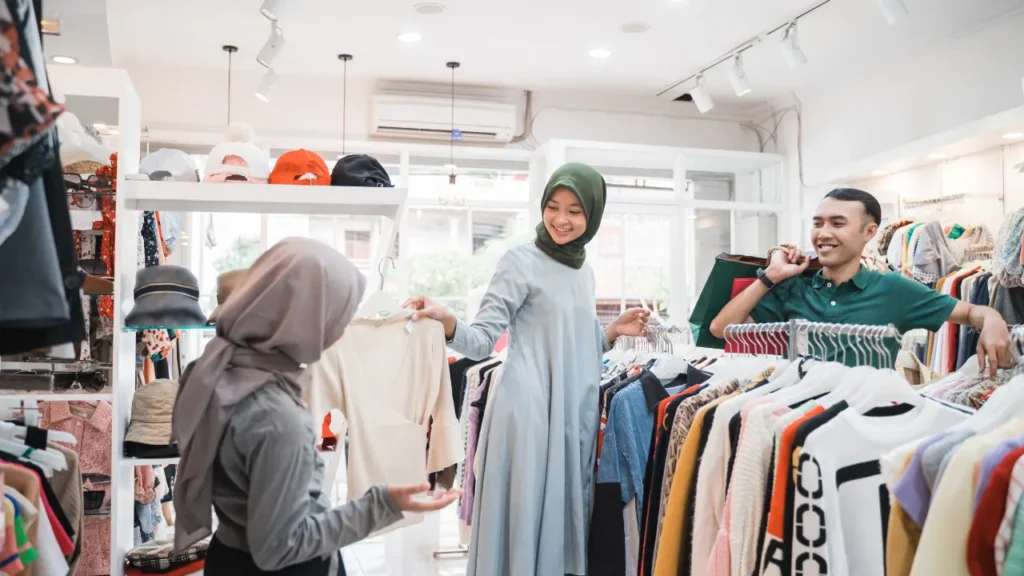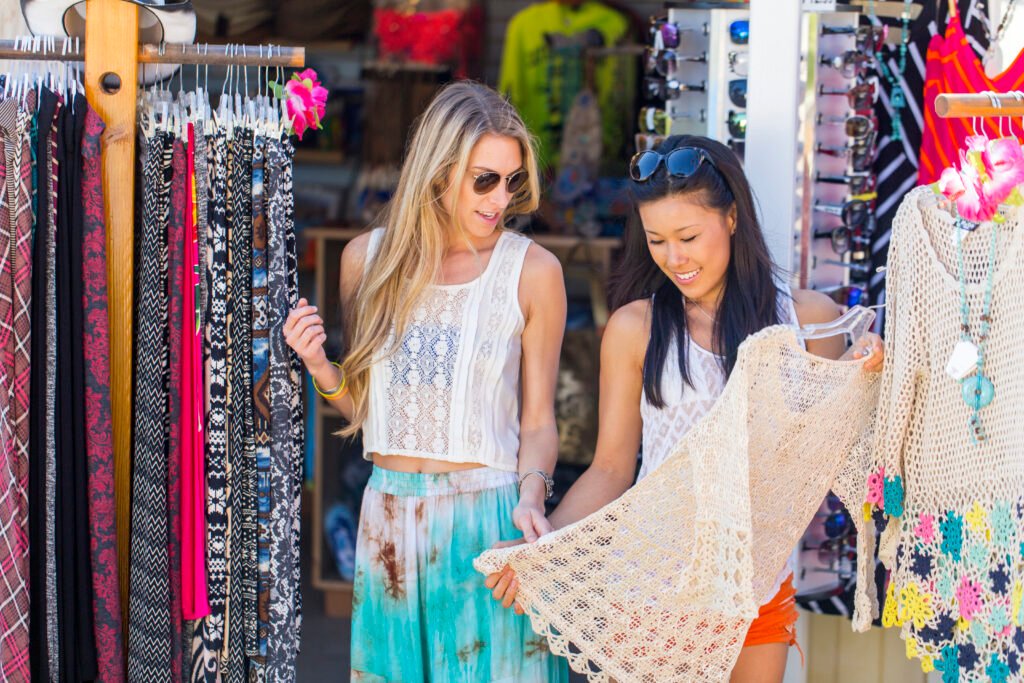In Bali, opt for lightweight, breathable fabrics and culturally respectful attire. Beachwear, casual clothes, and traditional Balinese garments are popular.
Travelers to Bali are greeted with a tropical climate and a rich cultural tapestry that demands a smart approach to packing. The island’s warm weather year-round requires clothing made of light and airy materials such as cotton, linen, or rayon to stay comfortable under the sun.
Tourists often choose loose-fitting dresses, shorts, and T-shirts for their versatility and convenience. Sarongs are a must-have, serving as a respectful cover-up when visiting temples and also doubling as beachwear. Stores across Bali also offer beautifully
crafted local attire, which gives visitors a chance to support the region’s artisans while embracing the local style. Remember to include a few conservative options for sacred places. Don’t forget essentials like a hat, sunglasses, and sandals for the ultimate island wardrobe.

Table of Contents
Toggle- Bali Shopping Guide
- Understanding Bali’s Fashion Scene
- What To Wear In Bali
- Choosing Clothes For Bali Adventures
- Balinese Fabrics And Textiles
- Sustainability In Bali’s Fashion
- Souvenir Shopping In Bali
- Clothes Shopping Strategy
- Tailoring And Custom Garments
- What Type Of Clothes Should I Buy In Bali
- Frequently Asked Questions For What Type Of Clothes Should I Buy In Bali
- Conclusion
Bali Shopping Guide
Bali is renowned for its vibrant traditional Balinese fabrics like batik, ikat, and socket. Enthusiasts of unique textiles will find exquisite patterns and materials ideal for tailored clothing or souvenirs.
For those with a penchant for luxury, Seminyak’s designer boutiques offer chic and contemporary fashion. High-end brands and local designers showcase their latest creations, reflecting an elegant fusion of Balinese culture and modern style.
Ubud’s artisan markets are a treasure trove for handcrafted goods. Delve into a wide selection of jewelry, carving, and textiles, each piece narrating the island’s rich artistic heritage.
Visitors should also consider adding beach and resort wear essentials to their wardrobe. Light, breathable fabrics and vibrant prints dominate the collections found in coastal shops, perfect for Bali’s tropical climate and laid-back vibe.
Understanding Bali’s Fashion Scene
Bali’s fashion scene is a reflection of its vibrant culture and tropical climate. Traditional attire such as the colorful and pattern-rich Kebaya intertwines with the casual beachwear influenced by the island’s laid-back lifestyle.
Visitors will find a wide array of clothing options, ranging from upscale boutiques offering custom-tailored pieces to local markets teeming with handmade crafts and textiles. With a strong emphasis on comfort and ease, linen and cotton dominate fabric choices to help beat the heat.
Amongst both locals and tourists, popular styles include flowing sundresses, lightweight shirts, and breathable trousers. Traditional Batik patterns can be seen on a variety of garments, offering a taste of local heritage combined with modern fashion sensibilities.
What To Wear In Bali
Bali’s cultural sites demand respect and modesty, so it’s essential to choose attire that covers shoulders and knees. Visitors are often required to don a sarong and sash when entering temples, which can usually be rented at the entrance or purchased as a memorable souvenir.
The island’s humid, tropical climate calls for light, breathable fabrics like cotton or linen. Loose-fitting clothes, such as sundresses, shorts, and t-shirts, are perfect for staying comfortable in the heat. Nevertheless, always carry a shawl or light jacket for abrupt downpours or cooler evenings.
Daytime attire can be casual and relaxed, whereas evenings may warrant a slightly dressier vibe, especially in upscale restaurants and bars. Think flowy dresses for women and casual shirts for men. Despite the laid-back atmosphere, beachwear like swimwear should be limited to beaches or pool areas only.
Choosing Clothes For Bali Adventures
Bali’s diverse landscape demands versatile clothing options for travelers. Start with lightweight and breathable fabrics like cotton or linen, which are perfect for the island’s tropical climate. Opt for loose-fitting clothes that allow air circulation, ensuring comfort during expansive outdoor explorations.
For beach-goers, swimwear is a must-have, with a preference for quick-drying materials. Include a couple of swimsuits or bikinis to enjoy Bali’s stunning beaches and luxurious pool sides. Always remember to pack a sun hat and sunglasses for sun protection.
Sturdy hiking shoes and moisture-wicking attire are essential for Bali’s rugged trails. Durable yet comfortable clothing will enhance your hiking experience, so consider lightweight pants and specialized outdoor gear for longer treks.
Balinese Fabrics And Textiles
Bali is renowned for its vibrant textile industry, with Batik and Ikat among the most famous fabrics. These textiles are celebrated for their unique dyeing techniques that involve resisting dyeing on the fabric. Batik is characterized by an intricate process of
applying wax to the fabric followed by dyeing, which results in distinctive patterns. Ikat, on the other hand, requires a method where the threads are dyed before weaving, leading to a signature blur in its geometric designs. Both styles tell a story of Balinese culture and tradition.
Explorers seeking authentic Balinese fabrics should head to the markets in Ubud and Seminyak, where handcrafted textiles from local artisans are widely available. By purchasing these unique fabrics, not only do visitors get a piece of Balinese heritage, but they also contribute to preserving the island’s cultural legacy and supporting the livelihoods of the artisan communities. It’s an opportunity to own a garment that carries more than just aesthetic value—it’s a piece of Bali’s heart and soul.
Sustainability In Bali’s Fashion
Bali’s tropical paradise isn’t just renowned for its picturesque landscapes but also for its vibrant fashion scene that focuses on sustainability. Conscious consumers are encouraged to support eco-friendly brands that promote ethical practices and use
sustainable materials. Notable brands leading this movement include Indosole, with footwear made from recycled tires, Threads of Life, using traditional weaving techniques, and Bye Bye Plastic Bags, a movement-turned-brand offering apparel advocating for plastic-free oceans.
Choosing to shop sustainably can significantly reduce environmental impact, contributing to an eco-conscious lifestyle. With Bali’s focus on preserving its natural beauty, each purchase from a sustainable brand helps to support local artisans and encourage responsible manufacturing. By selecting garments from establishments prioritizing the planet, not only do you invest in quality but also contribute to a global movement towards sustainable living.
Souvenir Shopping In Bali
Souvenir shopping in Bali offers a unique experience to travelers seeking to bring home memories of their journey. Choosing quality clothes as mementos from your trip can serve as lasting tokens of cultural immersion. Opt for traditional fabrics such as batik, which are not only beautiful but also steeped in local heritage. Bali’s markets are rich with handcrafted garments that reflect the island’s artistry. Carefully examine the stitching and material to ensure durability.
For a practical souvenir, consider breathable cotton clothing suitable for tropical climates. Look for unique prints that capture the essence of Balinese design, and prioritize vendors who offer ethical sourcing. This approach supports the local economy while providing you with authentic keepsakes. Compromise on neither style nor substance; your Bali clothing souvenirs should be as enduring as they are enchanting.
Clothes Shopping Strategy
Bali’s markets and shops boast a variety of clothing options that cater to different tastes and preferences. To make the most of your shopping experience, always have a budget in mind and be clear on the types of clothes you are looking to purchase. Whether you’re after traditional Balinese wear or modern beach attire, knowing what you want ahead of time will save you effort and time.
To successfully navigate through the bargaining culture of Bali, it is essential to learn a few basic Indonesian phrases. This not only shows respect but can also help you get better deals. Buyers should start negotiations at about 50% off the asking price and proceed with a smile. Patience and politeness often lead to enjoyable interactions and more favorable prices. Keep in mind that the end goal is a fair transaction for both parties.
| Item | Starting Bargain Price | Expected Final Price Range |
|---|---|---|
| Sarong | 50,000 IDR | 60,000 – 100,000 IDR |
| Beach Dress | 100,000 IDR | 150,000 – 250,000 IDR |
| Handmade Shirt | 75,000 IDR | 90,000 – 150,000 IDR |
- Start the price negotiation at around half of the quoted price.
- Maintain a pleasant demeanor for an amicable agreement.
- Walk away if a seller won’t meet your price – often, they will call you back with a lower offer.
- Be aware of the quality and authenticity of the products.
Tailoring And Custom Garments
Bali stands out as a unique destination for securing custom-tailored garments. One significant benefit of having clothes made in Bali is personalization. Garments tailored to an individual’s specifications offer a perfect fit, rarely achieved with off-the-rack items. Furthermore, the artistry and craftsmanship found among Balinese tailors can result in one-of-a-kind pieces, showcasing traditional techniques and contemporary fashion in tandem.
Identifying a reputable tailor is crucial, and visitors can find them across Bali’s popular areas. Seminyak, for instance, is renowned for upscale boutiques and tailoring services. Ubud, known for its artistic community, also houses skilled tailors who can create custom-fit clothing. It is essential to check for reviews, ask for previous work samples, and negotiate clear terms about timelines and pricing to ensure a satisfactory experience.
What Type Of Clothes Should I Buy In Bali
Balinese ceremonial attire represents a vibrant aspect of the island’s culture that visitors often wish to commemorate with a keepsake. Opt for garments like the traditional kebaya for women and the distinguished sarong and udeng for men. Such items are typically adorned with intricate patterns and are perfect for special occasions.
As for everyday wear, blending in with the locals doesn’t have to be a challenge. Lightweight, breathable fabrics are favored due to Bali’s tropical climate. Choose cotton t-shirts, airy blouses, or comfortable dresses that reflect Balinese style with subtle batik designs. Loose-fitting trousers or long skirts provide comfort while respecting cultural norms. This approach to dressing not only pays homage to local fashion but also ensures your utmost comfort as you explore the island’s beauty.
Frequently Asked Questions For What Type Of Clothes Should I Buy In Bali
What Fabrics Are Best For Bali’s Climate?
Linen and cotton are ideal for Bali’s tropical climate. They are breathable, and light, and help keep the body cool. Opt for loose-fitting clothes for extra comfort in the humidity.
Are Traditional Balinese Outfits Available For Tourists?
Yes, tourists can buy traditional Balinese outfits such as sarongs, kebayas, and udengs. These are widely available in local markets and offer a cultural insight as well as style.
How To Choose The Right Beachwear In Bali?
Opt for quick-dry, light beachwear in Bali. Sarongs are versatile and popular, doubling as beach cover-ups. Go for swimwear that is both comfortable and respects local customs.
What Should I Consider When Buying Bali Clothing Souvenirs?
When buying Bali clothing souvenirs, consider the craftsmanship, authenticity, and support of local artisans. Look for hand-made items that reflect Bali’s rich textile heritage.
Conclusion
Embrace Bali’s vibrant fashion scene on your next visit. Opt for breezy, lightweight fabrics and traditional prints to blend in and stay comfortable. Remember, your choices in Bali’s markets and boutiques can add a splash of island flair to your wardrobe, ensuring you not only look the part but also cherish the memories of your tropical getaway.



